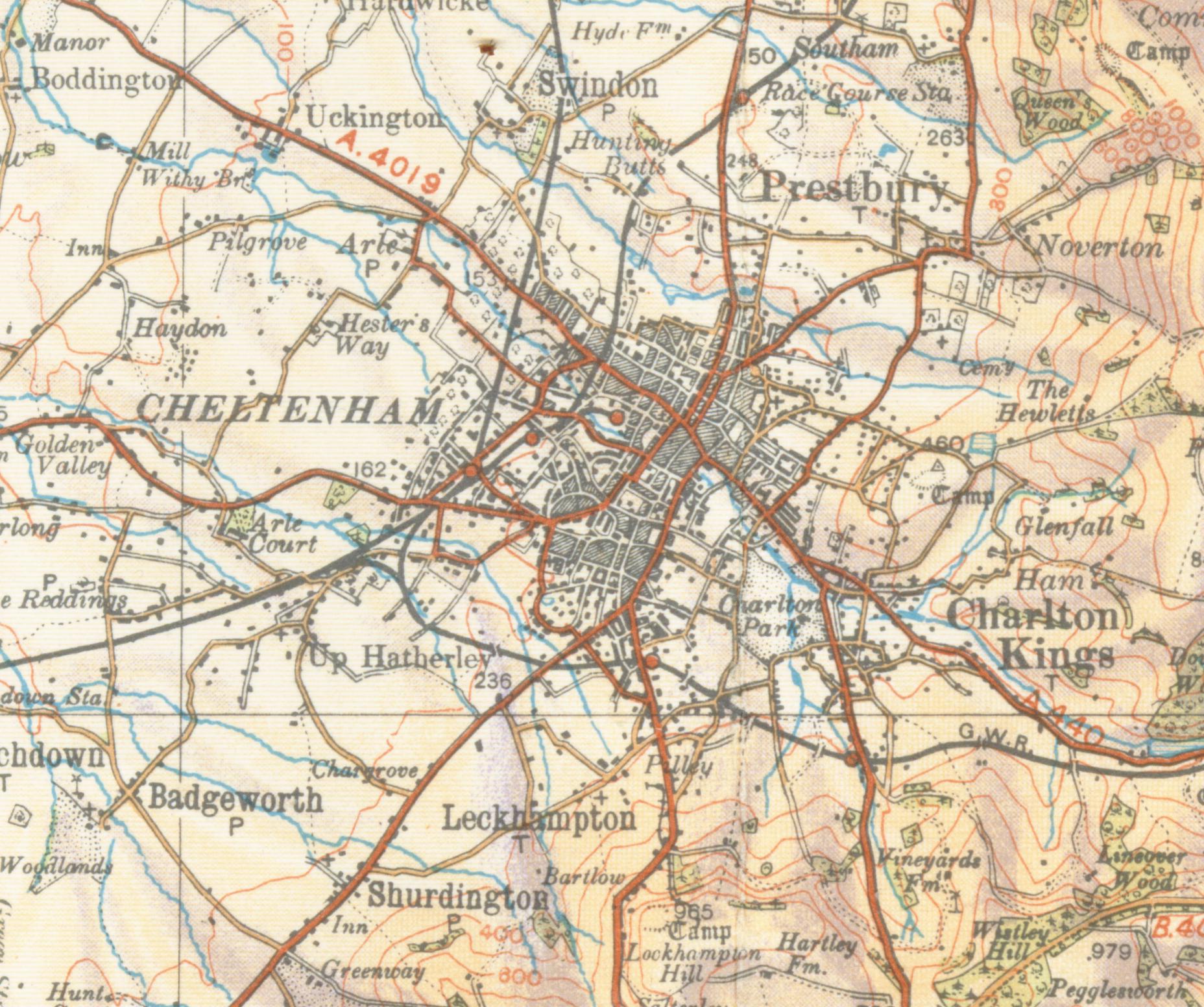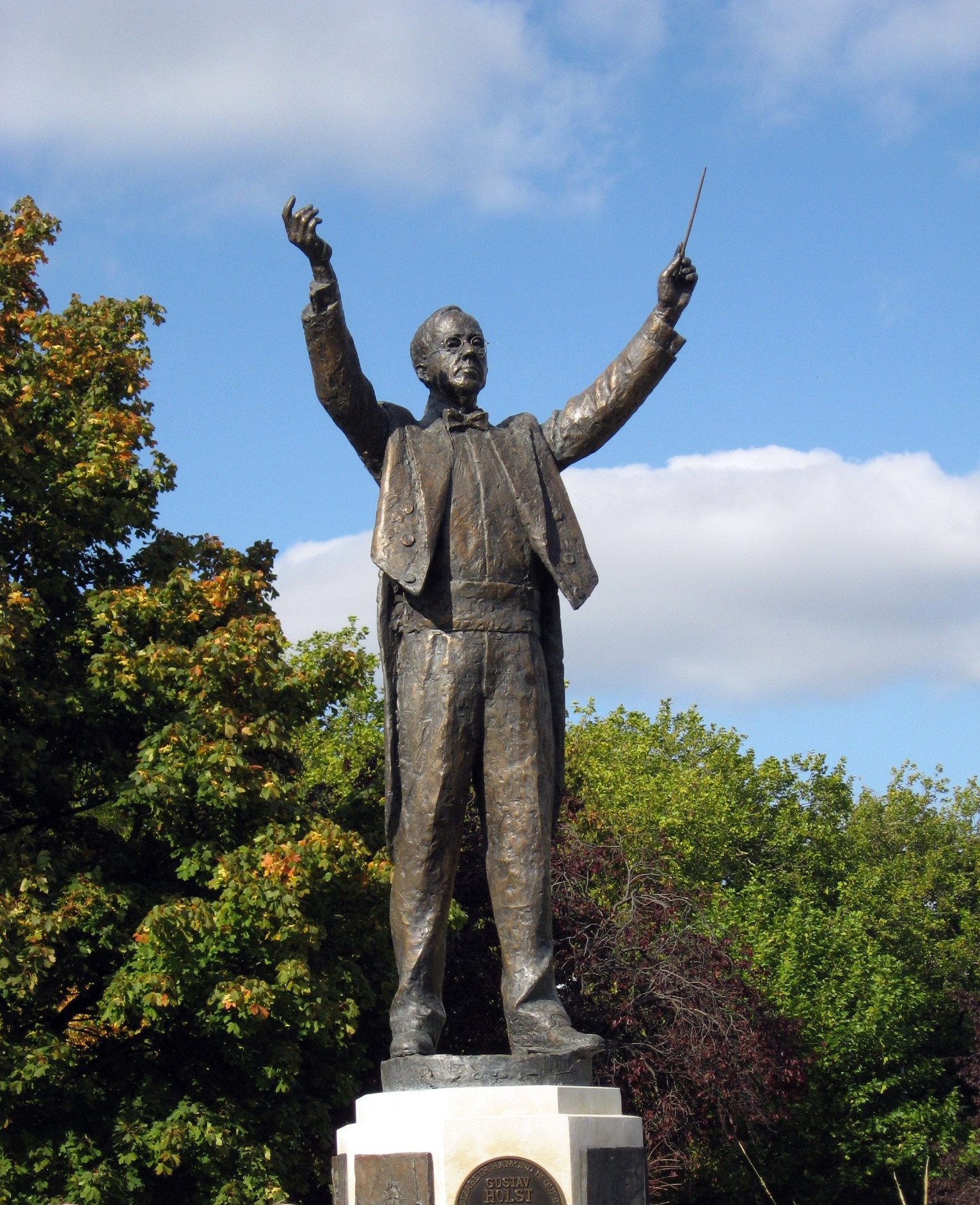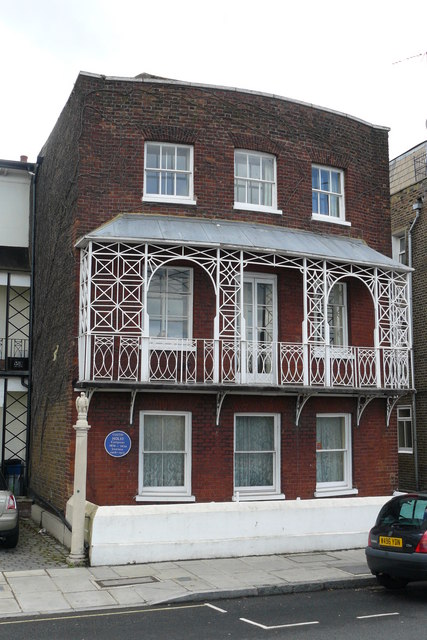|
Pittville
Pittville is a residential suburb of Cheltenham, Gloucestershire, England, founded in the early 19th century by Joseph Pitt. The population of Pittville Ward at the 2011 Census was 5,327. It contains Pittville Park, with its long gardens, two lakes, boat house, three cafes (including the boat house), tennis courts, menagerie, children's play area, 9-hole pitch and putt golf course, and one of Cheltenham's grandest and most celebrated buildings, the Pump Room. The upmarket tone of the area is set by the architecture: in addition to the Pump Room, Pittville contains some of the finest examples of Regency and Victorian housing in Cheltenham, including many of the town's largest houses. Schools in Pittville include Pittville School (the former Pate's Grammar School for Girls), and the private prep school Berkhampstead School. Gustav Holst's father, Adolph von Holst was organist at All Saints' Church, Pittville. "Gustavus Theodore Holst" (biography), ''Classical Net'', ... [...More Info...] [...Related Items...] OR: [Wikipedia] [Google] [Baidu] |
Pittville Park
Pittville is a residential suburb of Cheltenham, Gloucestershire, England, founded in the early 19th century by Joseph Pitt. The population of Pittville Ward at the 2011 Census was 5,327. It contains Pittville Park, with its long gardens, two lakes, boat house, three cafes (including the boat house), tennis courts, menagerie, children's play area, 9-hole pitch and putt golf course, and one of Cheltenham's grandest and most celebrated buildings, the Pump Room. The upmarket tone of the area is set by the architecture: in addition to the Pump Room, Pittville contains some of the finest examples of Regency and Victorian housing in Cheltenham, including many of the town's largest houses. Schools in Pittville include Pittville School (the former Pate's Grammar School for Girls), and the private prep school Berkhampstead School. Gustav Holst's father, Adolph von Holst was organist at All Saints' Church, Pittville. "Gustavus Theodore Holst" (biography), ''Classical Net'', 20 ... [...More Info...] [...Related Items...] OR: [Wikipedia] [Google] [Baidu] |
University Of Gloucestershire
, mottoeng = In Spirit and Truth , established = , type = Public , endowment = £2.4 m (2015) , chancellor = Rennie Fritchie, Baroness Fritchie , vice_chancellor = Stephen Marston , students = 9,220 (2017/18) , city = Cheltenham and Gloucester , country = England, UK , campus = Semi-urban , website www.glos.ac.uk , logo = , coor = , affiliations = ERASMUS BCAUniversities UK , image_name = Coat of Arms of the University of Gloucestershire.svg The University of Gloucestershire is a public university based in Gloucestershire, England. It is located over three campuses, two in Cheltenham and one in Gloucester, namely Francis Close Hall, The Park, Oxstalls and The Centre for Art and Photography being near to Francis Close Hall. In March 2021 t ... [...More Info...] [...Related Items...] OR: [Wikipedia] [Google] [Baidu] |
Cheltenham
Cheltenham (), also known as Cheltenham Spa, is a spa town and borough on the edge of the Cotswolds in the county of Gloucestershire, England. Cheltenham became known as a health and holiday spa town resort, following the discovery of mineral springs in 1716, and claims to be the most complete Regency town in Britain. The town hosts several festivals of culture, often featuring nationally and internationally famous contributors and attendees; they include the Cheltenham Literature Festival, the Cheltenham Jazz Festival, the Cheltenham Science Festival, the Cheltenham Music Festival, the Cheltenham Cricket Festival and the Cheltenham Food & Drink Festival. In steeplechase horse racing, the Gold Cup is the main event of the Cheltenham Festival, held every March. History Cheltenham stands on the small River Chelt, which rises nearby at Dowdeswell and runs through the town on its way to the Severn. It was first recorded in 803, as ''Celtan hom''; the meaning has not been resol ... [...More Info...] [...Related Items...] OR: [Wikipedia] [Google] [Baidu] |
Pittville Pump Room
The Pittville Pump Room was the last and largest of the spa buildings to be built in Cheltenham. The benefits of Cheltenham's mineral waters had been recognised since 1716, but not until after the arrival of Henry Skillicorne in 1738 did serious exploitation of their potential as an attraction begin. After the visit to Cheltenham in 1788 of King George III, the town became increasingly fashionable, and wells were opened up at several points round the town. Pittville, the vision of Joseph Pitt, was a planned 'new town' development of the 1820s, in which the centre-piece was (and remains) a pump-room where the waters of one of the more northerly wells could be taken. The Pump Room was built by the architect John Forbes between 1825 and 1830. It is a Grade I listed building standing at the northern end of Pittville Lawn with landscaped grounds running down to a lake. The building contains the original Pump, made of marble and scagliola, to which the waters are today fed by elect ... [...More Info...] [...Related Items...] OR: [Wikipedia] [Google] [Baidu] |
Pittville School
Pittville School is a coeducational foundation secondary school located in the Pittville area of Cheltenham in the English county of Gloucestershire. The school occupies the buildings and grounds formerly occupied by Pate's Grammar School for Girls; the school was founded in 1986, when Pate's moved within Cheltenham as a result of a merger. As a foundation school, Pittville is administered by Gloucestershire County Council. The school also has a specialism in the performing arts The performing arts are arts such as music, dance, and drama which are performed for an audience. They are different from the visual arts, which are the use of paint, canvas or various materials to create physical or static art objects. Perform .... References External linksPittville School official website Secondary schools in Gloucestershire Schools in Cheltenham Foundation schools in Gloucestershire {{Gloucestershire-school-stub ... [...More Info...] [...Related Items...] OR: [Wikipedia] [Google] [Baidu] |
Wyman's Brook
Wymans Brook is a district in the north-west of Cheltenham, Gloucestershire, England, named after the small river which flows through the district. It is situated relatively close to Cheltenham racecourse, Pittville Park, the Prince of Wales Stadium/ Leisure @ Cheltenham and the area of Cheltenham known as "Swindon Village". Overview The brook itself is dammed at Pittville to form an ornamental lake, and partly culverted as it flows through the district. In 2006 investigation revealed that the brook was suffering from increasing pollution from the Marle Hill landfill site (now a golf course). Before the brook becomes Pittville Lake, it flows through Whaddon (another area of Cheltenham). This is why a road adjoining the Cheltenham Town football ground is called "Wymans Road". After this, the brook goes on to flow through the residential area of Pittville, and under "Overbrook Drive". Following this, it flows along the bottom of Pittville School's front playing field a ... [...More Info...] [...Related Items...] OR: [Wikipedia] [Google] [Baidu] |
Robert Stokes (politician)
Robert Stokes (1809 – 20 January 1880) practised briefly as an architect in England in the 1830s before emigrating to New Zealand, where he had a varied career as a land surveyor, a newspaper proprietor and latterly as a member of the New Zealand Legislative Council. The Lower Hutt suburb of Stokes Valley in New Zealand commemorates his name. Origins Stokes was born in Jamaica on 16 January 1809, the son of Robert Stokes (then chief clerk in the Post Office in Jamaica) and of Martha Frances Stokes. Architectural career Stokes registered as a probationer student of architecture at the Royal Academy Schools in January 1830, entering on the recommendation of Sir Francis Chantrey, the leading portrait sculptor of the Regency period.Register at Royal Academy of Arts library He had exhibited student work at the Royal Academy in the late 1820s. Admitted to full studentship in June 1830, he was awarded a silver medal that year. He appears not to have completed the usual numbe ... [...More Info...] [...Related Items...] OR: [Wikipedia] [Google] [Baidu] |
Gustav Holst
Gustav Theodore Holst (born Gustavus Theodore von Holst; 21 September 1874 – 25 May 1934) was an English composer, arranger and teacher. Best known for his orchestral suite ''The Planets'', he composed many other works across a range of genres, although none achieved comparable success. His distinctive compositional style was the product of many influences, Richard Wagner and Richard Strauss being most crucial early in his development. The subsequent inspiration of the English folk music#Folk revivals 1890–1969, English folksong revival of the early 20th century, and the example of such rising modern composers as Maurice Ravel, led Holst to develop and refine an individual style. There were professional musicians in the previous three generations of Holst's family and it was clear from his early years that he would follow the same calling. He hoped to become a pianist, but was prevented by neuritis in his right arm. Despite his father's reservations, he pursued a car ... [...More Info...] [...Related Items...] OR: [Wikipedia] [Google] [Baidu] |
John Forbes (architect)
John B. Forbes (born 1795?) was an architect in Cheltenham. He designed the Pittville Pump Room for Joseph Pitt (1825-1830) and St Paul's Church (1829-1831). Besides the Pump Room, on which he personally worked 1825–28, and St Paul's Church, he is credited with several other buildings in Cheltenham, including 129-131 Promenade, 1-13 Imperial Square, 3 houses in St James Square, Montpellier Villas, 29-37 Pittville Lawn, and Brandon House, Grafton Road. He had difficulty managing the finances of several concurrent speculative developments. In 1835 he was convicted of forgery, having attempted fraud on a business partner: a sentence of transportation Transport (in British English), or transportation (in American English), is the intentional movement of humans, animals, and goods from one location to another. Modes of transport include air, land (rail and road), water, cable, pipeline, ... was commuted to a short prison term. His architectural career did not recover. Per ... [...More Info...] [...Related Items...] OR: [Wikipedia] [Google] [Baidu] |
Imogen Holst
Imogen Clare Holst (; 12 April 1907 – 9 March 1984) was a British composer, arranger, conductor, teacher, musicologist, and festival administrator. The only child of the composer Gustav Holst, she is particularly known for her educational work at Dartington Hall in the 1940s, and for her 20 years as joint artistic director of the Aldeburgh Festival. In addition to composing music, she wrote composer biographies, much educational material, and several books on the life and works of her father. From a young age, Holst showed precocious talent in composing and performance. After attending Eothen School and St Paul's Girls' School, she entered the Royal College of Music, where she developed her skills as a conductor and won several prizes for composing. Unable to follow her initial ambitions to be a pianist or a dancer due to health reasons, Holst spent most of the 1930s teaching, and as a full-time organiser for the English Folk Dance and Song Society. These duties reduced ... [...More Info...] [...Related Items...] OR: [Wikipedia] [Google] [Baidu] |
Pate's Grammar School
en, That which is hidden shall be revealed , established = , closed = , type = Grammar school;Academy , religion = , president = , head_label = , head = Russel Ellicott , r_head_label = , r_head = , chair_label = , chair = , founder = Richard Pate , address = Princess Elizabeth Way , city = Cheltenham , county = Gloucestershire , country = England , postcode = GL51 0HG , urn = 136353 , ofsted = yes , staff = 87 teaching, 35 support , enrolment = 995 , gender = Coeducational , lower_age = 11 , upper_age = 18 , houses = Beaufort Gloucester Richmond York Pembroke , colours = Black, grey, white, red , publication = ''Pate's Progress''''The Grammar School Gazette'' , free_label_1 = Alumni , free_1 = Old Patesians , free_label_2 = , free_2 = , free_label_3 = , free_3 = , website = Pate's Grammar School is a grammar school with academy status in Cheltenham, Gloucestershire, England. It caters for pupils aged 11 to 18. The sc ... [...More Info...] [...Related Items...] OR: [Wikipedia] [Google] [Baidu] |
Cotswold Grange, Cheltenham
Cotswold Grange Hotel in Cheltenham is a building of historical significance. It was built in about 1840 as a private residence and was home to many notable people over the next century. It is now a hotel which provides accommodation and restaurant services. Early history Cotswold Grange was erected in about 1840 and one of its earliest residents was John Waddingham (1799–1890), a wealthy merchant and landed proprietor. He is shown to be living there from about 1848 until 1862. He is recorded in the 1851 Census as the occupier of the house with his wife Margaret, three children and six servants. He was still living there ten years later as revealed in the 1861 Census. Soon after this he moved to Guiting Grange near Winchcombe. John Waddingham was born in 1799 in South Ferriby, Lincolnshire. By 1822 he was working in a family company in Leeds but he soon developed his own business in woollen and other types of cloth. In 1837 he married Margaret Wilkinson daughter of James Wil ... [...More Info...] [...Related Items...] OR: [Wikipedia] [Google] [Baidu] |





